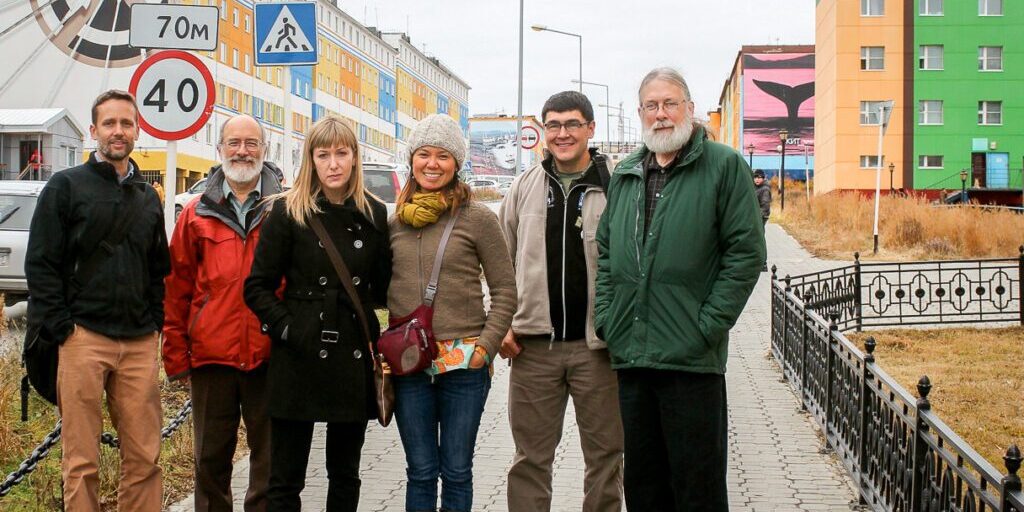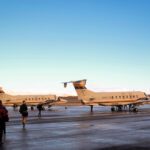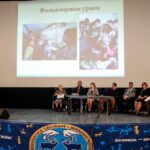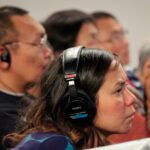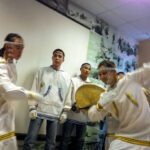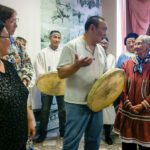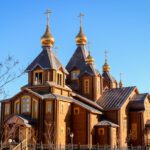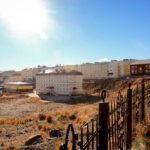News director Laureli Kinneen was able to take advantage of an incredible opportunity this fall: to report, on location, from an international conference in Anadyr (AH-nuh-deer), a city in the northeastern Russian region of Chukotka (choo-COAT-kuh).
The gathering – The Beringia Days International Conference – brought together researchers and cultural representatives from both sides of the Bering Strait.
As Laureli describes, the conference was not only a meeting of minds, but also a gathering connecting the cultures – and hearts – of her home region with Alaska’s neighbors to the west:
The flight was just an hour and 45 minutes. Twenty nine of us left Nome on September 25th, and when we landed, there was cheering, clapping, and wonder by those of us who’d never set foot on Russian soil. To think that, a little more than 25 years ago, a flight like this would have been impossible, I knew at the time that our flight was a reason to celebrate. However, I would learn through the course of the next four days how celebratory that flight truly was.
In the weeks leading up to the flight, I’d prepared myself for the possibility of staying in Nome and missing the entire trip. But it arrived: my visa. Five days before we left. My name was stamped in Russian inside my passport, and I quickly found myself in the land of tomorrow – in a place where I could not order myself breakfast. Or coffee. Or ask where the bathroom was.
“Spasibo” (spa-SEE-buh), I learned quickly. Thank you.
The conference began a day later, and 29 of us, mainly Alaskans, strapped on our earpieces and listened to the presentations translated from Russian to English. Thanks to a travel scholarship and support from the Institute of the North, I provided coverage of the conference for our listeners in my home region in Western Alaska.
It was on the first day of the gathering that I met and had the privilege to interview Айнана (uh-YAW-nguh), an elder of Anadyr. She spoke of times during the “Wall of Ice” when she watched her parents walk to the shores of the western side of the Bering Strait and look toward Alaska’s St. Lawrence Island, where their relatives lived – relatives they were not allowed to visit during those 40 years. She said it was sad seeing them long for family, but she also spoke of the hope that she maintained. I spoke with her through a special interpreter: my friend John Waghiyi (WAH-hee) from Savoonga, a community on the same island as Айнана’s ancestors.
All around me, family from different countries spoke the same language. With tears, with smiles, and with thankfulness, they shared about the beauty to simply embrace. To sing together. To talk. To be in the same room. To be family.
On that final day of the conference, I began to understand. We – the indigenous people from both sides of the Bering Strait, of the same country but separated by nations – got together. I was in a room where the girls looked like my cousins. The women looked like my aunties. They smiled and laughed like them, prepared food and drank tea like them. They sang and danced the traditional songs like my friends on St. Lawrence Island. It was all very familiar.
On that final night, the gray-haired Айнана bossed me around as my grandmother would have. I was honored to grab her a cup of black tea – and then return for a cube of sugar, my heart full. “Spasibo” and a smile from the strong woman, and I felt I belonged. We are the same.
We flew back to Nome the following day. With new friends, new insight, and the eastern shores of Russia now alive in my mind with color, faces, and songs, I am simply grateful. I will never know the deep longing Айнана’s parents had for their relatives on St. Lawrence Island. But the other day I was walking on the beach in Nome and thought of Anadyr. I looked out and wondered what my friends were doing.
The Beringia Days Conference will return to Alaska in 2015. Laureli is already looking forward to reuniting with friends and, thanks to you, sharing their stories with our listeners.
Thanks to Karlin Itchoak of the Institute of the North for these photos!
This article is part of the November 2013 edition of our newsletter,
The Nome Static.
Read more articles from this issue (November 2013)




